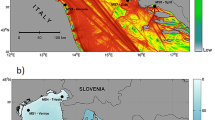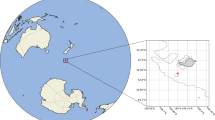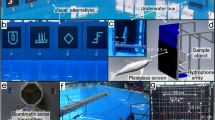Abstract
IN 1958 the National Institute of Oceanography developed a narrow beam sideways looking sonar for underwater geology and fish detection1 based on earlier work first reported on by Chesterman, Clynick and Stride2. During the past 10 years it has proved to be a valuable tool in studying the materials and relief of the sea floor at continental shelf depths. For some years it has been supplied to research laboratories and geophysical prospectors by instrument manufacturers in Britain and elsewhere.
This is a preview of subscription content, access via your institution
Access options
Subscribe to this journal
Receive 51 print issues and online access
$199.00 per year
only $3.90 per issue
Buy this article
- Purchase on Springer Link
- Instant access to full article PDF
Prices may be subject to local taxes which are calculated during checkout
Similar content being viewed by others
References
Tucker, M. J., and Stubbs, A. R., Brit. J. Appl. Phys., 12, 103 (1961).
Chesterman, W. D., Clynick, P. R., and Stride, A. H., Acustica, 8, 285 (1958).
Author information
Authors and Affiliations
Rights and permissions
About this article
Cite this article
RUSBY, J., DOBSON, R., EDGE, R. et al. Records obtained from the Trials of a Long Range Side-scan Sonar (GLORIA Project). Nature 223, 1255–1257 (1969). https://doi.org/10.1038/2231255b0
Received:
Issue Date:
DOI: https://doi.org/10.1038/2231255b0
This article is cited by
-
An experimental survey of a herring fishery by long-range sonar
Marine Biology (1973)
Comments
By submitting a comment you agree to abide by our Terms and Community Guidelines. If you find something abusive or that does not comply with our terms or guidelines please flag it as inappropriate.



